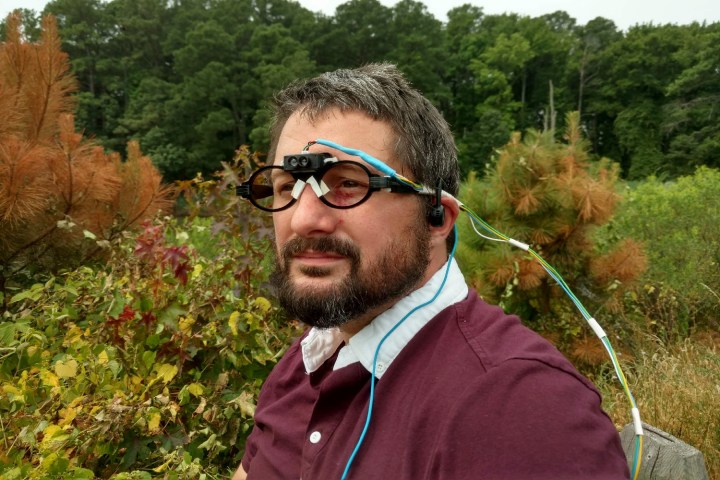
As one of its most notable applications, Lidar technology is most commonly associated with self-driving cars. Engineer Andrew Thaler had a different use in mind: Creating a Lidar-powered wearable device that lets you experience life the way a dolphin would.
Called DolphinView, the head-mounted display fuses Lidar technology with the technology developed for bone-conducting headphones to transform the world into a series of vibrations that can be heard through the wearer’s jaw. That, incidentally, is the same part of the body that real dolphins hear through. It’s also a similar technological approach to the “echolocation” process dolphins use to hear, which involves emitting high-pitched clicks which are then bounced off surrounding objects to provide a sense of spatial awareness.
“This is a teaching tool that mimics how dolphins might perceive biosonar by using a Lidar to take a distance measurement, and converting that measurement into pulse and vibrations in their jaws,” Thaler told Digital Trends. “This is a very rough approximation of how dolphins use echolocation to detect objects.”
According to Thaler, the technology works well enough that, as people walk around wearing the headset, they do start to gain an understanding of what the various dolphin-like clicking sounds mean. With a bit of practice, people can become proficient enough with DolphinView that they can pick out open doorways with their eyes closed.
“I’m aware that people have started speculating on applications for people with vision impairment, but similar experimental systems already exist and have had very limited uptake,” he continued, regarding whether or not there are practical applications for the technology.
If you really are keen to live the dolphin way, however, Thaler is here to help — and has made all the instructions and source code available in a GitHub repository to ensure it’s as straightforward as possible. “With a little bit of expertise it’s not a particularly difficult build,” he said. A complete build should cost you less than $100 to complete and is achievable in a weekend. Interested parties may also want to check out his other open-source ocean-related projects.
What better way to teach your kids about the world of dolphins — or, heck, just engage in a spot of post-Comic-Con Flipper cosplay?
Editors' Recommendations
- Instagram’s newest feature will let you know when it does go down
- Apple Fitness+ now lets you work out with your friends
- Twitter now lets you easily see retweets with comments. Here’s how
- Instagram now lets you see why the same accounts keep appearing in your feed
- What does f/0.98 look like? The Nikon Noct is a monstrous lens you can’t afford


